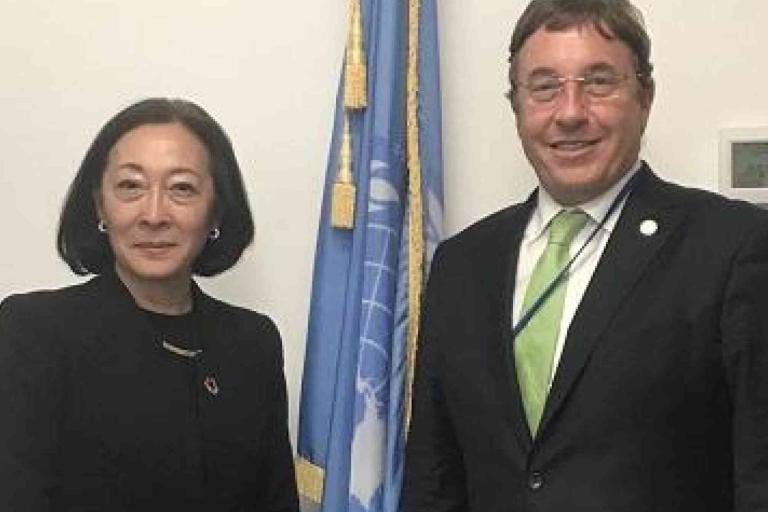Lessons of cyclone Nargis still need to be applied

By Mami Mizutori and Achim Steiner
In May 2008, less than four years after the Indian Ocean tsunami resulted in the loss of 230,000 lives, the world witnessed another disaster which provided a tragic illustration of the price people and nations pay in the absence of effective early warning systems being in place.
Despite warnings to the government, Cyclone Nargis swept across the coastal belt of Myanmar killing 138,000 people largely unaware that they would be caught up in the worst such disaster to ever impact the country.
Nargis was packing winds up to 215 km/h when it made landfall and met with little resistance in a country where 25 percent of the population live in houses built with materials such as bamboo, wood, and leaves, that offer little protection and are easily washed away in heavy rains, a flood, or a storm.
Such housing was no defense against a 3.5-meter storm surge which travelled 40 kilometers up the densely populated Ayeyarwady Delta, west of Yangon. Destruction to property and farmland was estimated at $4.1 billion or the equivalent of 12 percent of the country’s GDP.
The anniversary of Nargis is a good moment to reflect on how far the world has come in reducing the death toll from disasters while underlining that there is still plenty of need for disaster risk preparedness in the face of climate change, sea-level rise, and growing population density in hazard-exposed areas.
One only has to look to the Bay of Bengal to quickly appreciate the life-saving difference that early warning systems can make.
Five months before Nargis, an equally strong cyclone named Sidr struck Bangladesh. Earlier, such events resulted in very high death tolls including the Great Cyclone of November 1970 which caused over 300,000 deaths.
In the case of Sidr, deaths still numbered around 3,000 according to official estimates, but the Cyclone Preparedness Programme that had been put in place by the Government in partnership with the Bangladesh Red Crescent and international donors was largely responsible for having far less destruction and loss of life.
Updating early warning systems to keep pace with the fast increase in extreme weather events over the last 40 years is vital in the struggle to prevent disasters, save lives, and reduce disaster losses.
Progress has also been made with establishing Tsunami Warning Systems which are now in place for the main oceans where the risk is greatest including the Atlantic, Indian and Pacific Oceans, and the Mediterranean and connecting seas.
As countries such as Bangladesh, India, and Myanmar move quickly and comprehensively to strengthen early warning and preparedness, partners in the U.N. System are also working hand-in-hand with government partners to help deliver results.
For example, the CREWS (Climate Risk Early Warning Systems) initiative, backed by the U.N. Office for Disaster Risk Reduction (UNISDR), the World Meteorological Organization and the World Bank, is designed to strengthen multi-hazard early warning systems especially in low and middle-income countries.
UNDP works closely with UNISDR and partners to achieve the goals of the Sendai Framework. This has included support to national and sub-national governments to put in place over 1,000 disaster risk management or preparedness plans over the past four years, including early warning technology and capacity support to many countries with high levels of disaster risk.
Yet, even with these efforts, over 80 percent of the world’s 48 least developed countries and many small island developing territories and states have only a basic early warning system, and weather observation networks are inadequate in many countries in Africa. These are the countries where further support is needed.
From now to November is the peak period for tropical storms from the Arabian Sea to the Pacific to the Caribbean. When we forget about catastrophic events like Cyclone Nargis, it is at our peril.
Mami Mizutori is the UN Special Representative for Disaster Risk Reduction and head of the UN Office for Disaster Risk Reduction (UNISDR) and Achim Steiner is the Administrator of the UN Development Programme (UNDP)
This opinion piece was originally published by Thomson Reuters Foundation News. Click here.
- WMO Member:
- Myanmar

